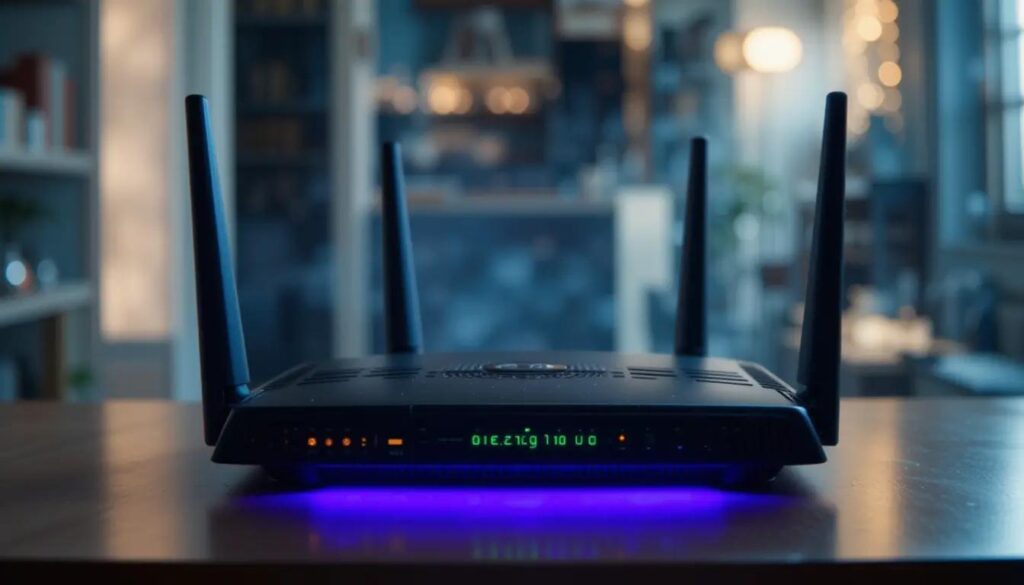Why restarting your router fixes internet issues

An Internet connection is an essential component of our daily lives, and facing Wi-Fi problems can be frustrating. However, there is a simple solution that can help: restarting the router. In this article, we will explore why restarting your router fixes internet issues and how you can do it effectively.

- How to restart your router and fix common Wi-Fi problems
- Do you need a simple fix to your internet issues? Try resetting your router
- How often should you reboot your router?
- Why restart your router?
- How to restart your router?
- How to fix slow Wi-Fi?
- What are other Wi-Fi troubleshooting resources?
- How to do a hard reboot of your router?
How to restart your router and fix common Wi-Fi problems
Restarting your router is one of the most effective steps to solve common Wi-Fi problems. This process allows the network connection to be reset and often resolves issues of slowness or disconnections. When you restart your router, you eliminate temporary errors that may be affecting your performance.
Additionally, by restarting the router, you also help to free up resources. Over time, routers can accumulate usage data that causes them to run more slowly. Restarting it helps to clear that data and optimize performance.
If you experience persistent problems, also consider performing an analysis of your network to identify interference or unauthorized devices. Often, restarting the router can be the first step towards a more stable connection.
Do you need a simple fix to your internet issues? Try resetting your router
If you are suffering from frequent disconnections or slow speeds, resetting your router may be the simple solution you need. This process involves unplugging the router from the power, waiting a moment, and plugging it back in. This simple step allows the router to clear any temporary errors that are causing problems.
In many cases, Internet problems are caused by network congestion. By restarting your router, you give it a new chance to manage connectivity more efficiently. This process can be especially effective if you have multiple devices connected to the network.
In addition to improving connectivity, restarting your router can help resolve compatibility issues with new devices. Many times, routers need to be restarted to correctly recognize additional devices or software updates.
How often should you reboot your router?
The frequency with which you should restart your router depends on several factors. However, as a general rule, it is recommended to restart your router at least once a month. Maintaining a restart routine helps to ensure optimal performance of your network.
Some experts suggest restarting the router every week, especially if you experience frequent connection problems. This helps keep the network fresh and reduces the possibility of temporary errors.
- Restart monthly to maintain performance.
- Consider a weekly restart if there are frequent problems.
- Perform a restart after installing new devices.
If your network is used intensively, such as in homes with multiple users who stream or play online games, a more frequent restart could be beneficial. This helps maintain the speed and stability of the connection.
Why restart your router?
Restarting the router may seem like a simple step, but its benefits are significant. Why restarting your router fixes internet issues is a common question, and the answer lies in how routers manage connections.
Over time, routers can accumulate temporary data that hinders their performance. By restarting it, you eliminate this data and allow the device to function correctly. This process can resolve issues such as slow browsing or unexpected disconnections.
Additionally, restarting the router can also help resolve compatibility issues with your Internet Service Provider. Sometimes, the router's configuration update does not apply correctly until it is restarted.
How to restart your router?
Restarting your router is a simple process that can take less than five minutes. Here are the basic steps:
- Unplug the router from the power supply.
- Wait at least 60 seconds.
- Plug the router back into the power supply.
- Wait for all the lights to stabilize and the router to be fully on.
It is important not to rush when plugging the router back in. Waiting at least a minute allows the device to fully restart and clear any temporary errors. This simple procedure can resolve many connectivity issues.
How to fix slow Wi-Fi?
If your Wi-Fi connection is slow, there are several steps you can follow in addition to restarting your router. First, make sure the router is located in a central and elevated place to maximize signal coverage. This can significantly improve network performance.
It is also crucial to check the number of devices connected to your network. If you have many devices using the same bandwidth, this can cause slowness. Consider disconnecting devices that you are not using.
- Make sure the router firmware is updated.
- Relocate the router to improve the signal.
- Limit the number of connected devices.
Additionally, if problems persist, you might consider talking to your Internet Service Provider about the possibility of upgrading your plan. A faster plan could be the solution to improve the overall browsing experience.
What are other Wi-Fi troubleshooting resources?
In addition to restarting your router, there are other resources that can help you solve Wi-Fi problems. There are online tools to perform speed tests that can help you diagnose if there is really a problem with your connection.
It is also useful to consult the support page of your router's manufacturer. Many manufacturers offer troubleshooting guides and may have specific tips for your router model.
Finally, consider visiting forums and online communities where other users share their experiences and solutions. These can be valuable resources for solving common problems.
How to do a hard reboot of your router?
A hard reboot of the router may be necessary if a normal restart does not solve your connection problems. To perform a hard reboot, follow these steps:
- Locate the reset button on the back of the router.
- Hold the button down for at least 10 seconds.
- Wait for the router to fully restart and all the lights to stabilize.
This type of restart resets the router to its factory settings, which means you will lose any customized settings. So make sure you have a copy of your settings before proceeding.
After a hard reboot, you may need to reconfigure your Wi-Fi network, so have your access information ready. This process can be useful if your router has been running inefficiently for a prolonged period.
Restarting the router, whether normally or through a hard reboot, is a fundamental step to ensure a reliable and secure Internet connection.
Remember that regularly restarting your router can help prevent many connectivity problems and improve your overall browsing experience.
Knowing how and when to restart your router is key to maintaining optimal Internet connectivity. By following these tips, you can enjoy a faster and more reliable Wi-Fi network.
Finally, if you experience persistent problems, do not hesitate to contact your Internet Service Provider for technical assistance.

Deja una respuesta